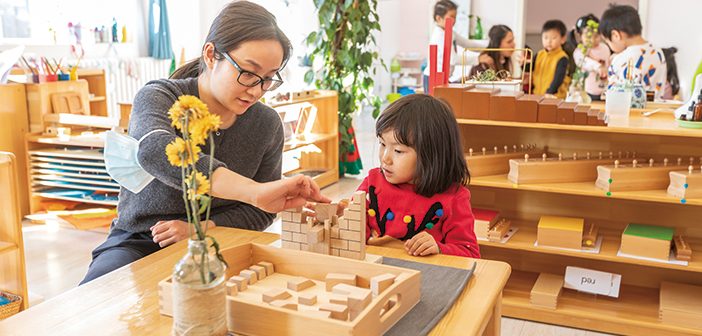
At The Children’s House, Beijing’s first international Montessori school, children learn math through aesthetically pleasing tools.
How often have you walked into a preschool or kindergarten and just wished you could stay there? Have you ever wanted to curl up into a kindergarten reading nook with that novel that’s been collecting dust at your bedside, or fiddle with the sensory bins and build with their various colorful wooden blocks? Even in the midst of that lovely chaos that children under five bring into a space, the best Early Childhood Education (ECE) centers emit calm, peace, play, and acceptance. Through these elements, learning thrives.
Then the child gets home, and the rules are all different, nothing is their size except for toys, and an environment that used to be the most important in their lives might suddenly feel foreign. All the living spaces, save for their room or playroom, are created with adults in mind. I’ve seen firsthand how younger children will get used to the structure and expectations of their classroom, then feel discombobulated when they return home to a different setup and discipline. But a home is a home and not a preschool. So how can parents and guardians integrate key principles from the ECE classroom without losing their own place and style in their home?
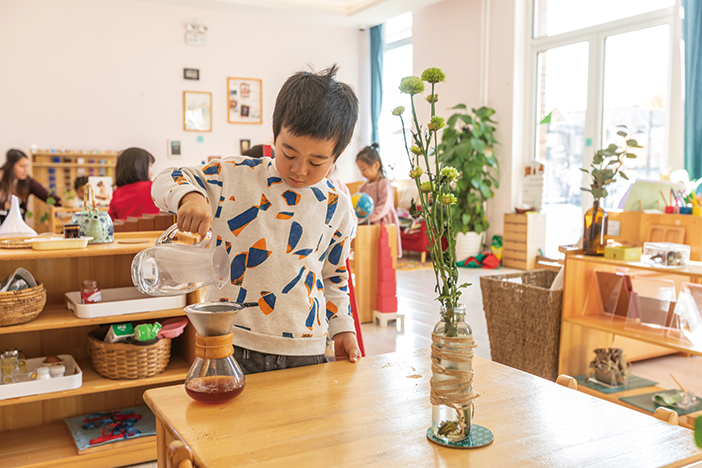
Children love to pour at The Children’s House, and it’s a wonderful way to understand motor control and spatial relationships.
Much depends on the relationship between parents and their child’s early education once they attend school. Margaret O’Brien, Principal of Etonkids’ Central Park Campus, believes the bond between home and school should be strengthened: “Collaboration between the child’s school and home is hugely important for any child’s progress. A unified message from caregivers and teachers underlines the concept’s importance.”
One simple way to supplement what a child learns in ECE is to encourage their independence. Katleen Mentens, Head of School for The Children’s House Montessori Kindergarten, suggests that parents slow down. “In order for children to become more independent, we urge parents to allow children to do things by themselves without taking over, simply because you are in a hurry. This means allowing your little ones to get dressed by themselves and put on their own shoes. For older children, they can help with cleaning up their own spills, help with preparing meals, clean up their toys, put dirty clothes in the hamper, and fold clean laundry.”
Parents might also want to step back and look at their space from a child’s point-of-view. Are there ways they can set up a home space to assist the child in their development? A staple of the Montessori classroom is that every piece of furniture is child-sized, real, and aesthetically pleasing. Having items that are attractive to children is as important as their function. Mentens clarifies that “A spacious and cozy area where each toy and book is beautiful and neatly organized goes a long way for children to develop their sense of order and their care for the environment.”
These child-friendly perimeters include mealtimes as well. O’Brien elaborates that “Having young children help prepare the meal or set the table helps them develop self-esteem and independence and feel included. It also produces a sense of appreciation for food and cooking. When possible, it’s best not to feed a child older than two years. Yes, it may be messy, but it’s all part of the learning process and links to developing independence.”

Etonkids provides children with different reading nooks
and places they can relax outside of class.
How adults approach mealtime will pave the way for your child’s attention and focus on eating well, and Mentens suggests you create a sacred time around meals. “Mealtimes are the moments in the day that the family gathers around the table and shares their experiences. TV or other electronic devices have no place during breakfast, lunch or dinner as they prevent us from truly connecting to each other, and they also distract from eating mindfully and focusing on all the rich flavors of the meal that was prepared with love and care.”
Parents may want to take another look at the toys they have and how they’re stored or displayed. Most parents invest in a lot of plastic items, believing that children are too prone to dropping or breaking items and can’t be trusted. That is the opposite of the Montessori way, and Mentens encourages parents to use real objects so “children learn to handle them more carefully in order to avoid them to break or to hurt themselves. Also, every material has its fixed place in the classroom, and children learn to put things back once they have finished working with them. We urge parents to follow the same principles at home.”
It might seem radical to a parent that if the child knows where an object should go, they will return it to its proper place on their own. But you’d be surprised at how children thrive when they understand how their space works, especially a play space. O’Brien says parents can help and “not clutter the space but keep it simple. For a young child, too many options can be counterproductive and may lead to sensory overload. If language acquisition is your goal, having books, displayed nicely, and accessible, is helpful.”
Books are a great place to start with these concepts. Place a child’s books within their reach, cover facing out, and not too many in view at one time. Every week or so you can rotate which covers are visible so the child rediscovers their favorite stories! O’Brien even finds that books are the best route towards learning another language. “In my experience, one of the most common questions from parents is how to supplement English-language learning at home. I usually advise parents to expose their child to as much English language as possible through books, videos, music, posters and a limited number of English apps.”

Placing items into baskets is a smart way to encourage children
to put their own toys away, displayed at Etonkids.
Role play and imaginative play are also learning. There is often a misconception that children must be on a certain path to learning, or must fill in worksheets to show they know what they know. But at younger ages, and even through older schooling, playtime is the most important time of discovery and learning for a child. O’Brien suggests play acting at home as much as possible: “Children love to role play, and it doesn’t feel like work for them. So I suggest imaginative play at home as opposed to structured learning. Children are already naturally curious and enjoy learning, so providing them with toys and materials to encourage this is a good idea. It also helps to elicit target vocabulary entertainingly. Children thrive under structure and routine but learn best when having fun. If you can strike a balance between these two approaches, your child will flourish.”
Don’t get worried if your preschool child is “behind.” Society gives parents these ideas of when a child should know their letters, when they should tie their own shoes, when they should read. But everyone is unique. “Just like you cannot will an egg to hatch or a first tooth to grow, you should not be too worried about when your child will start reading or start showing interest in numbers,” Mentens believes. “Your child is ready when it is her time. Take the time to observe your child: What is she interested in? What is he good at? What can she concentrate on for extended periods of time? Put your own expectations aside and truly get to know your child. It is through truly connecting that you get to know him and they get to know you.”
Should You Say “Be Careful”?
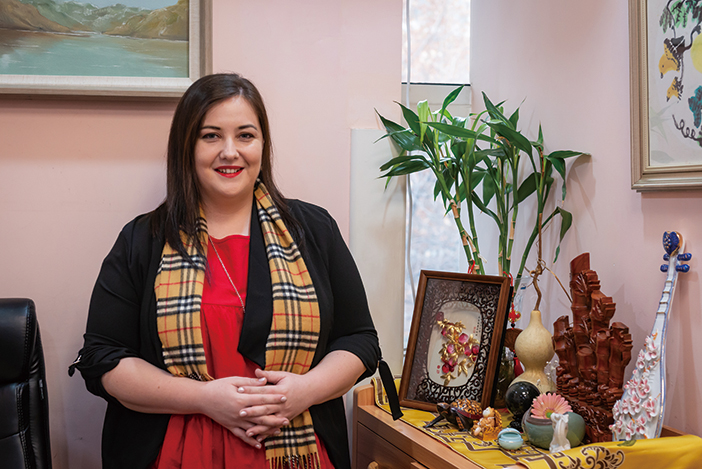
O’Brien: In my opinion, “Be careful” is a perfectly practical phrase as long as the context is provided. For example, “Be careful, the oven is hot. If we touch it, we will burn our fingers”. Or “Be careful when you cross the road, cars and bikes can be dangerous”. “Be careful” on its own can be meaningless to a young child.
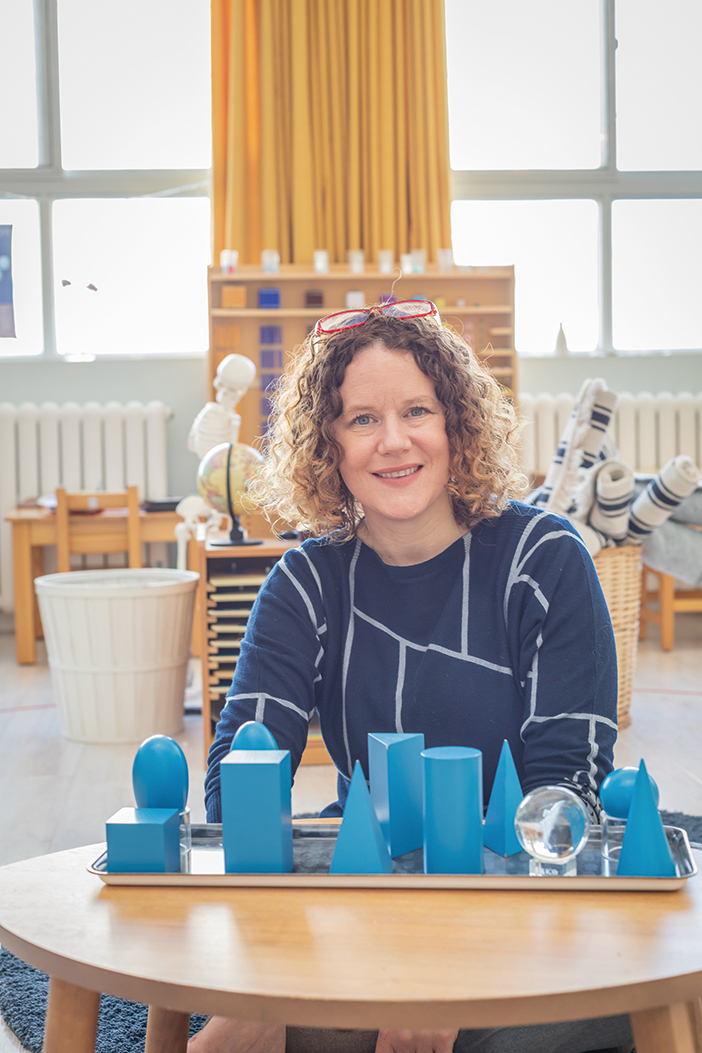
Mentens: Children between the ages of 0 and 6 are constantly on the move. It is crucial that children are allowed to practice and refine all of these [new]gross motor skills and while doing so, they will experiment and take risks. Risk-taking is crucial for children to experience the boundaries of their physical abilities at that time in their development as well as to learn from their falls and bumps. It is through falling that we learn to walk. It is through bumping into one another that we learn the importance of special awareness. So as long as there is no immediate danger, shout the words “Be Careful!” silently in your head and let your child experience the wonders of being mobile.
KEEP READING: Get Ahead in International Education at JISE
Images: Courtesy of schools
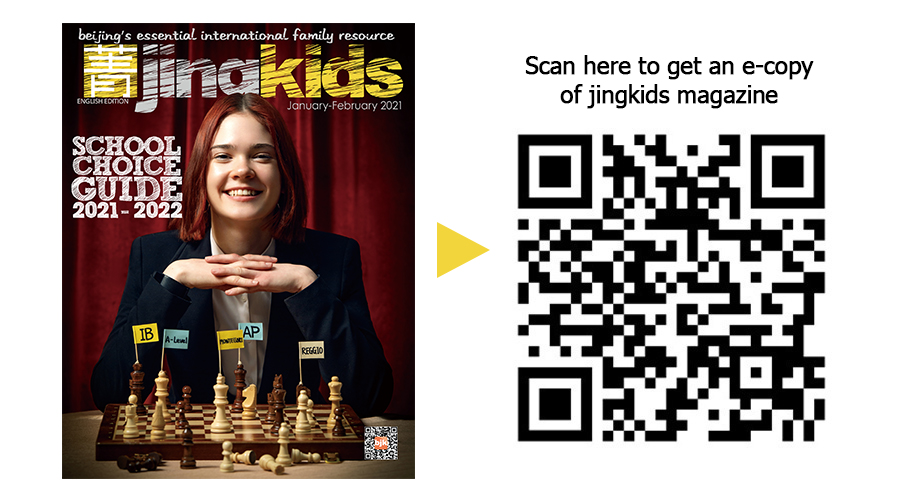 This article appeared in the jingkids 2021 January issue
This article appeared in the jingkids 2021 January issue

